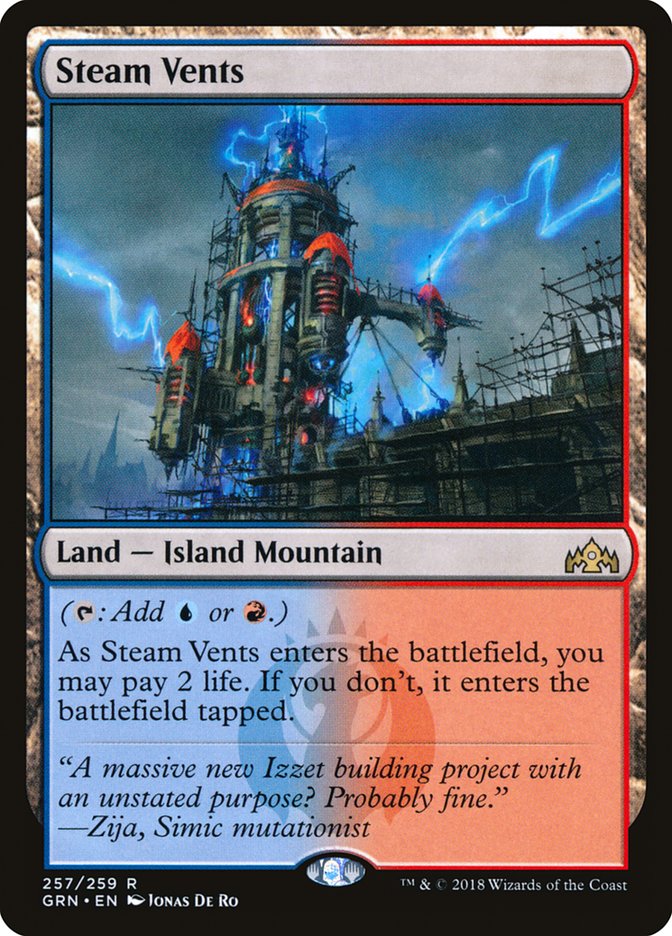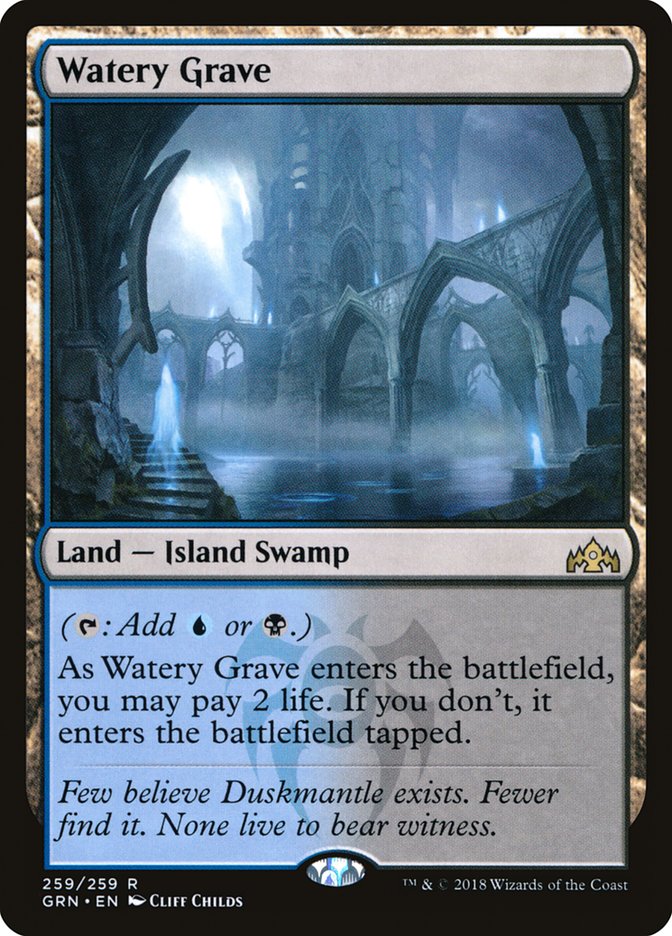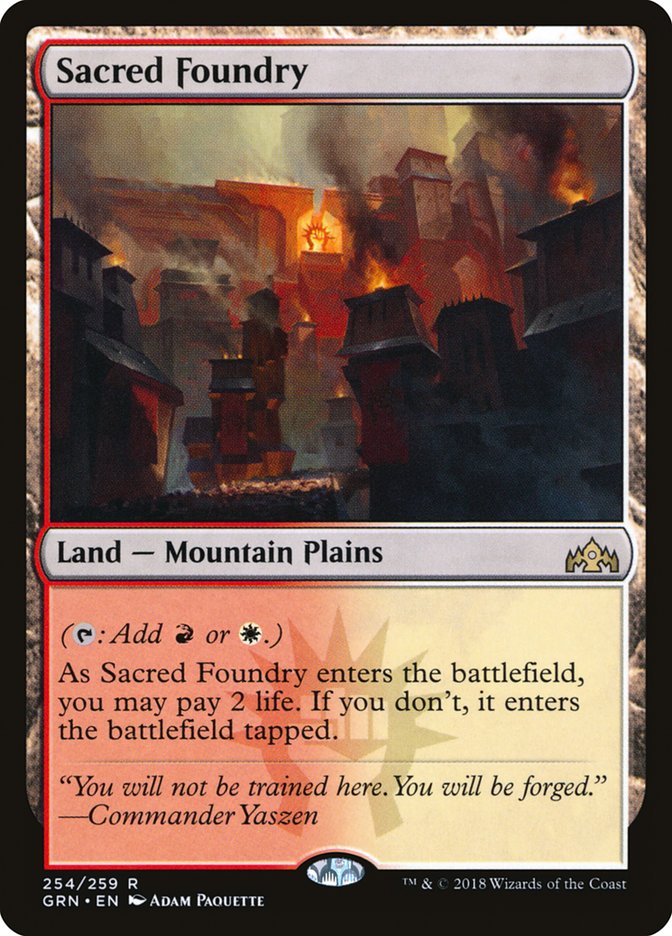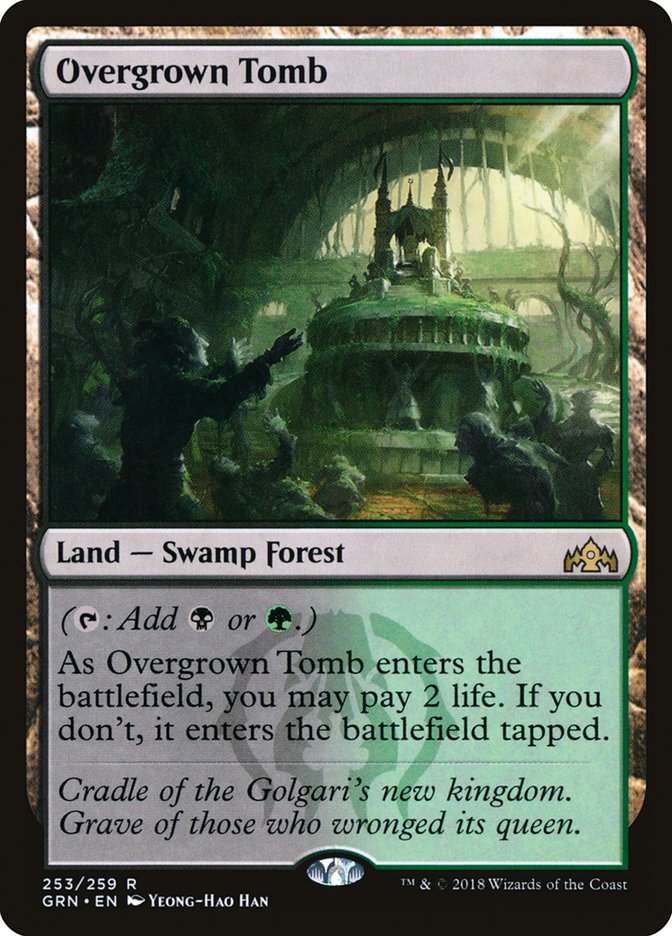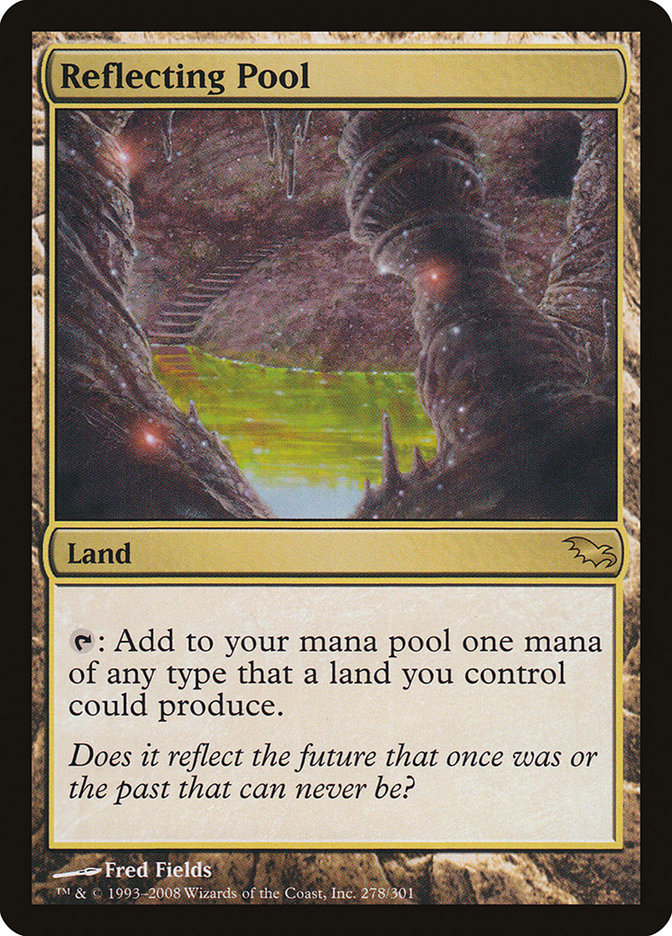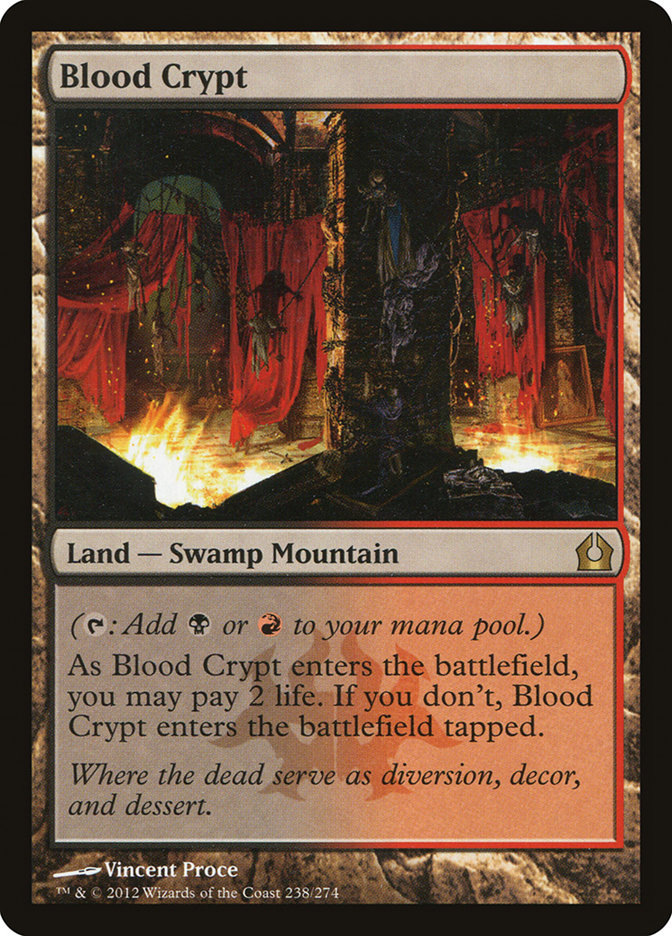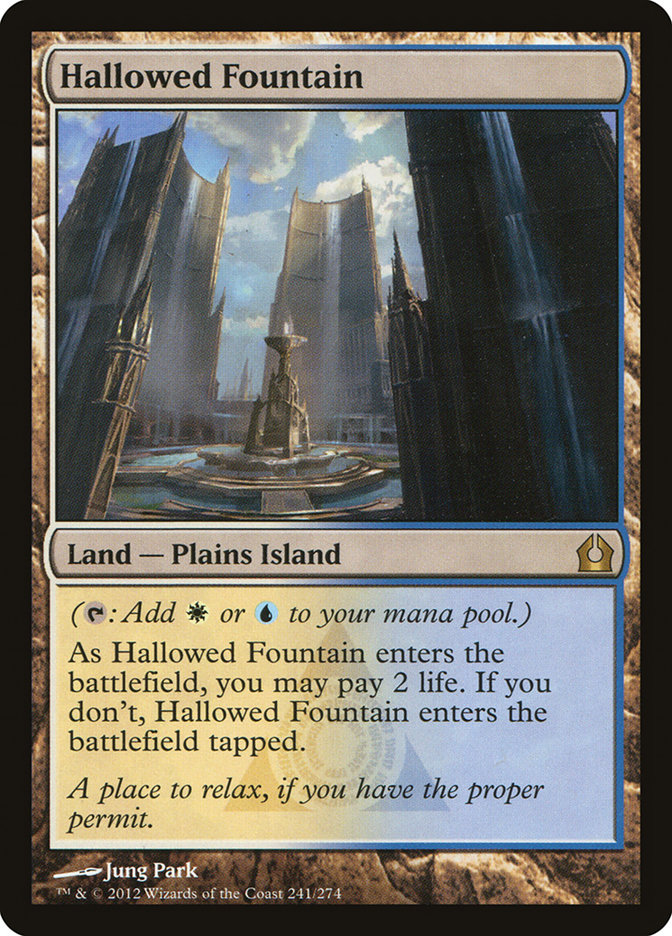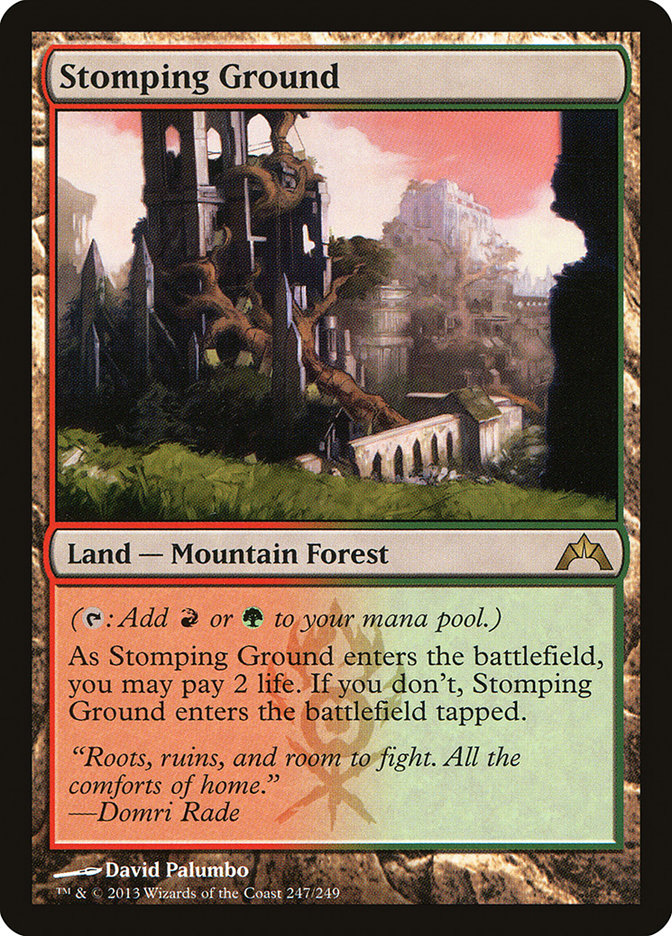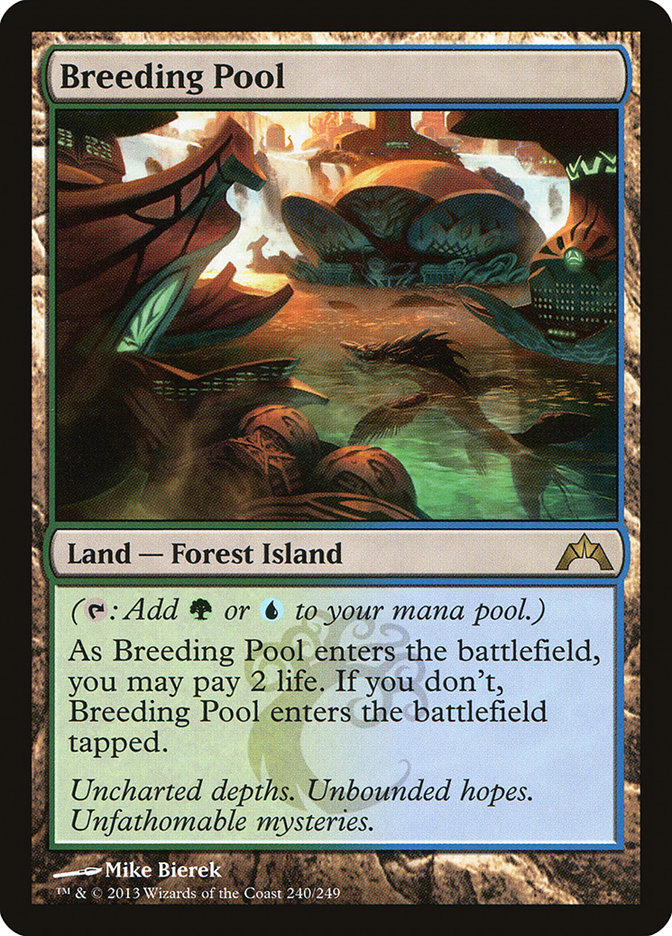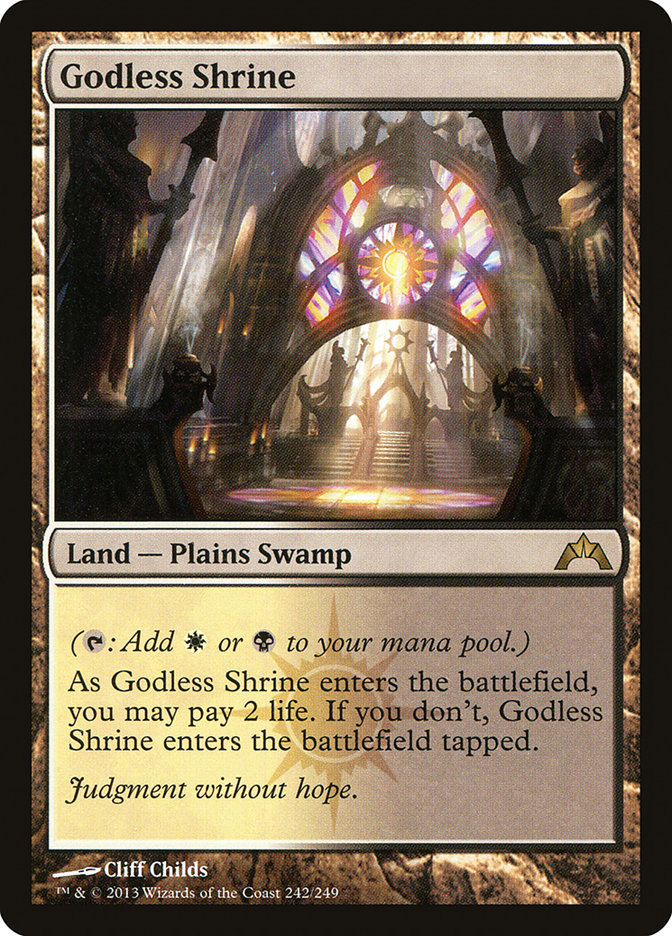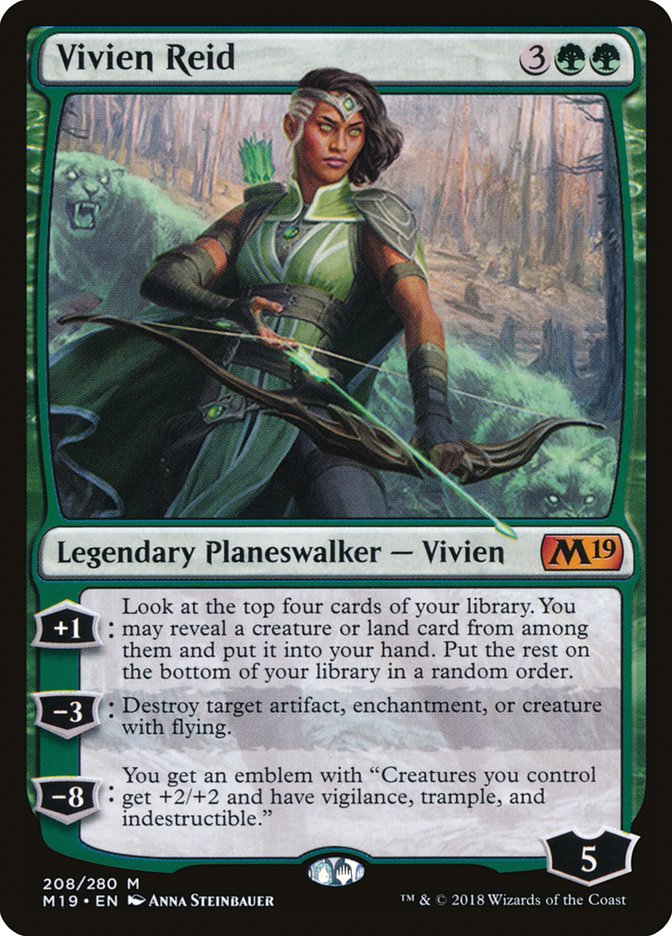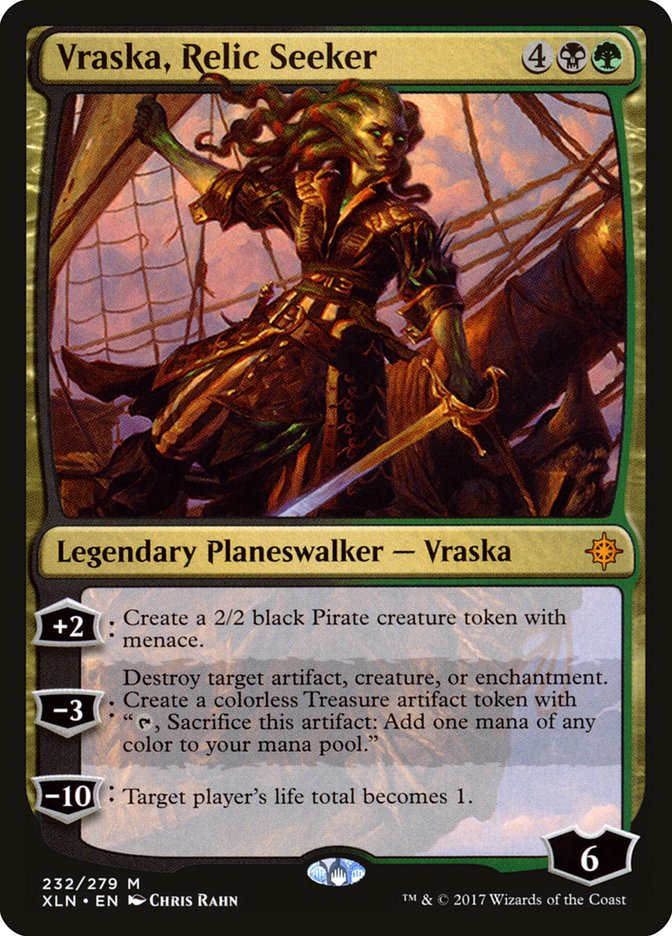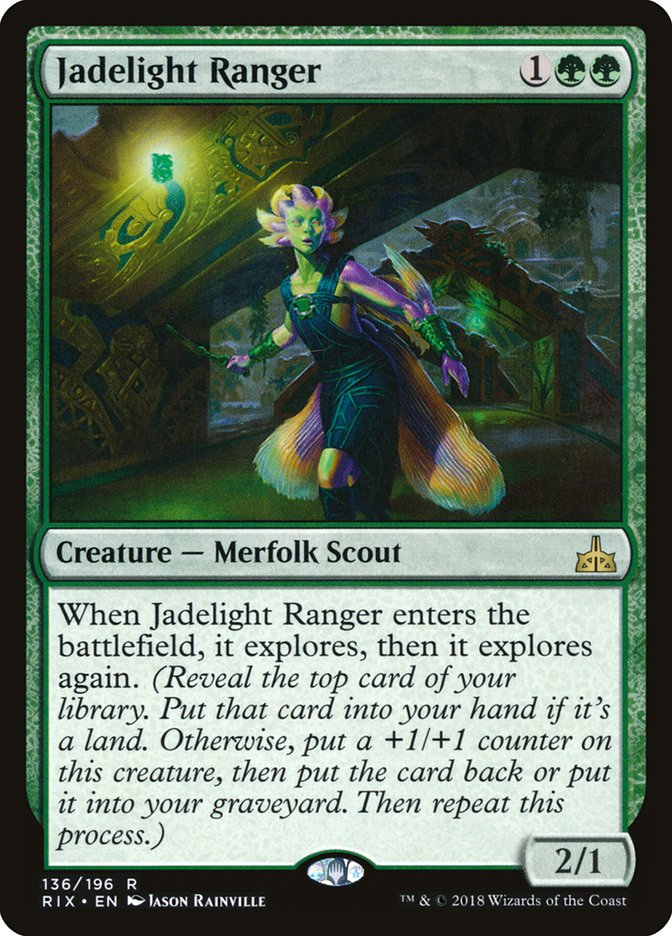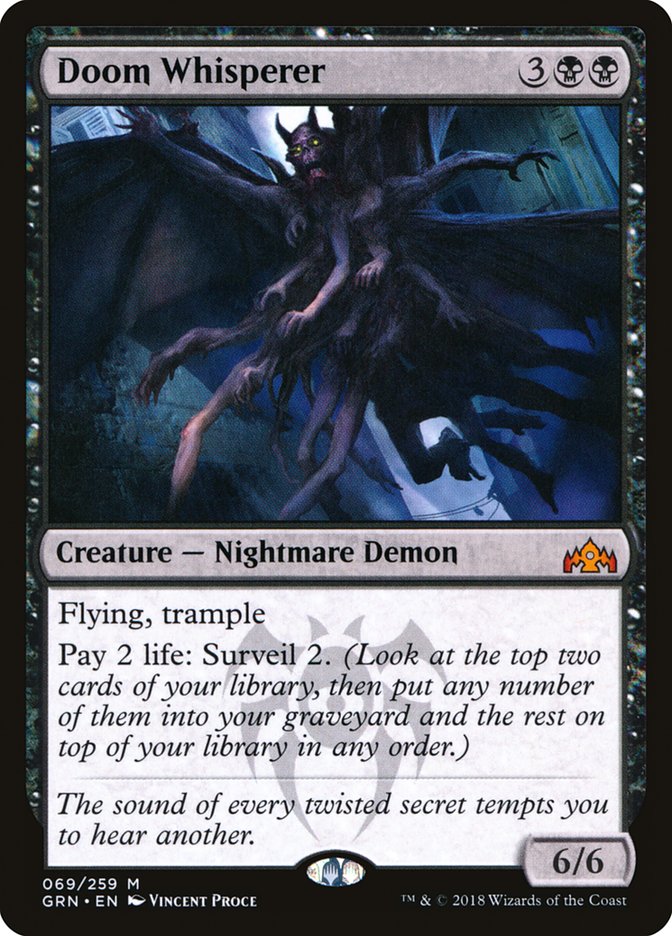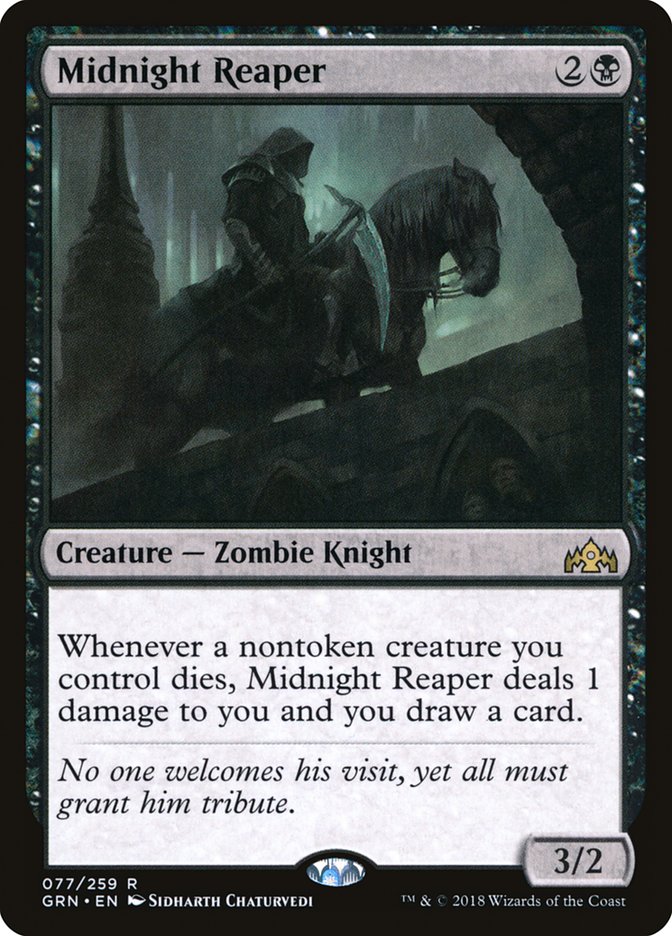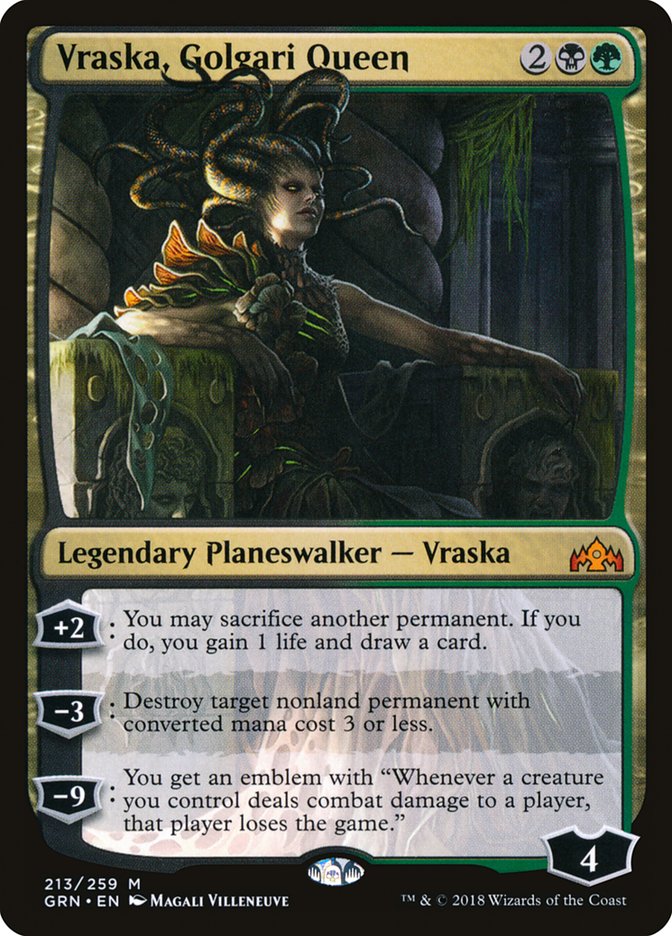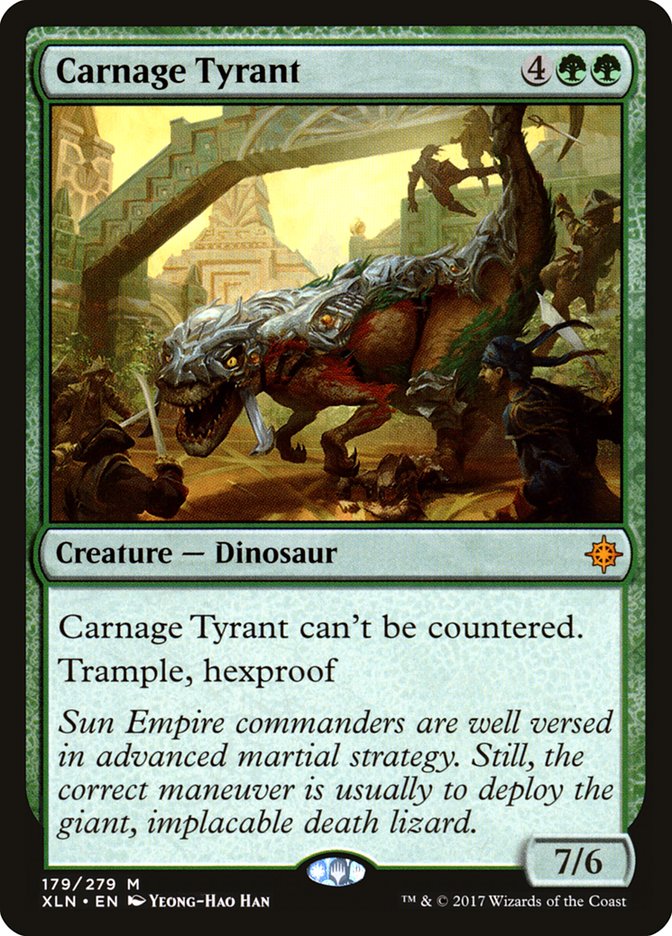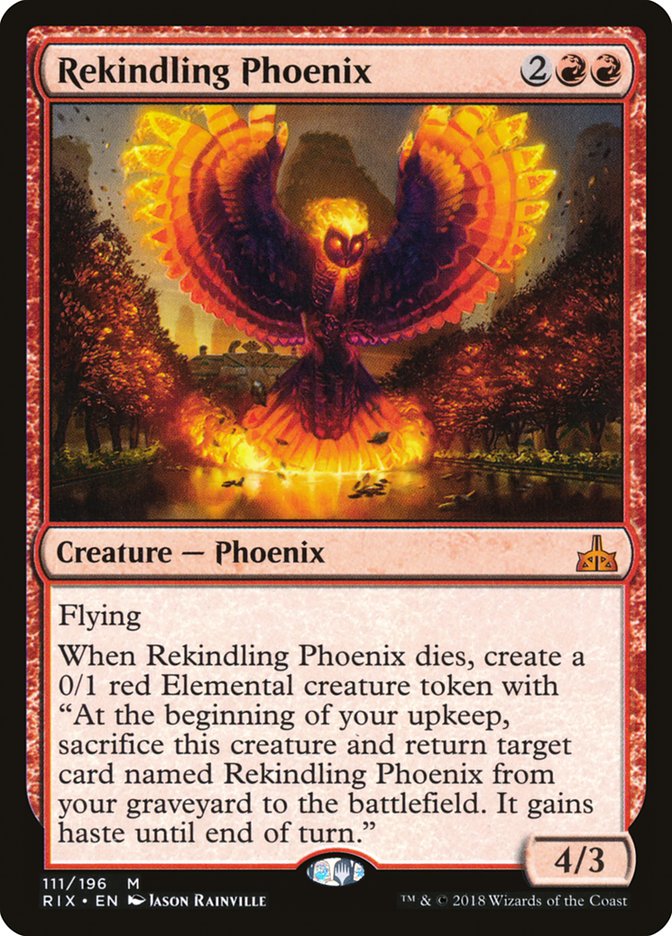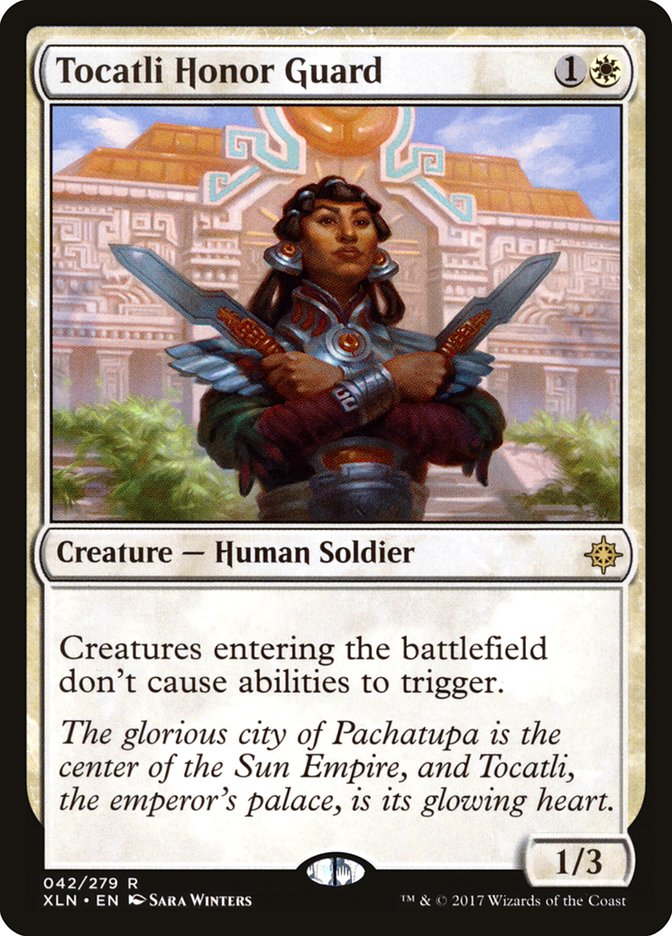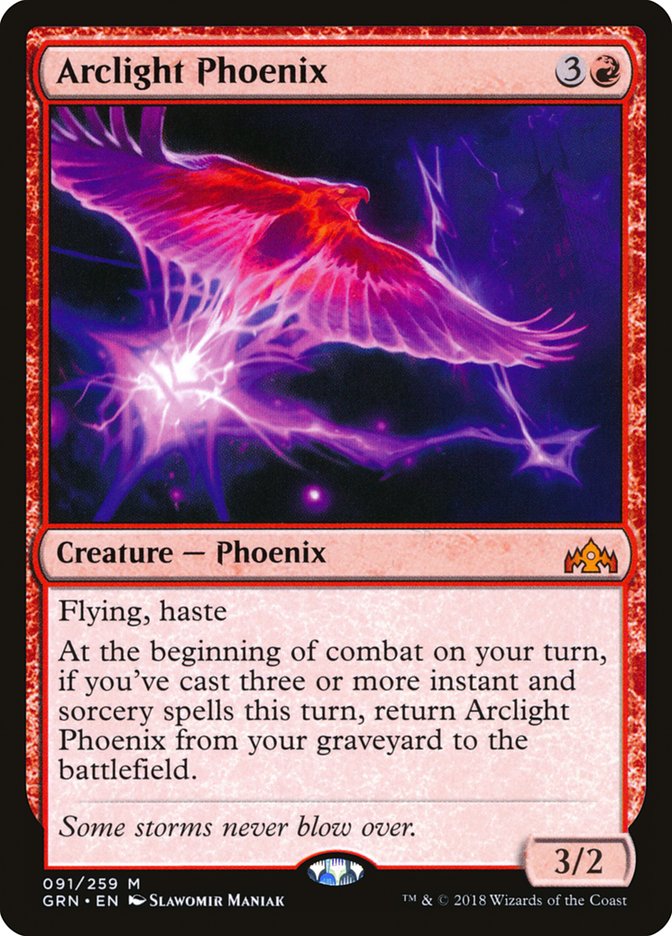I know, I know…I wrote about Standard
last week
and
the week before
. We’ve talked about everything from Mono-Red Aggro to Golgari Midrange to
that weird Sarkhan deck with all the Dragons.
Here’s the thing, though-Standard is awesome right now. All the
conversations I’m having about social media are related to Standard,
everyone I know is focused on the format, and every 5-0 MTGO decklist info
dump from WotC is like manna from heaven.
So yeah. If you want to talk about the weird stuff going on with Eternal
prices on MTGO or the sweet new Arclight Phoenix deck in Modern, I’ve got
you covered at the end of this article. But until then, we’re going to keep
talking about the most popular (and most fun!) format in Magic.
Boy, how long has it been since we’ve been able to say either of those
things about Standard?
Welcome to Shocktober
I’ve talked a lot about key Standard staples like Teferi and Doom Whisperer
over the past couple of weeks, but I’ve kind of glossed over five of the
most expensive cards in Guilds of Ravnica so far: the shocklands.
Whenever they’re reprinted, Ravnica‘s shocklands always end up
among the most powerful cards in Standard. The fetchlands are a little more
impactful, but the shocklands are probably the second-best cycle of lands
that we’ve seen in recent years. Not only do they impact multicolor
playability in a major way, but their price tends to remain robust in a way
that few other cards have ever managed to do.
When it was announced that the shocklands would return in Guilds of Ravnica, it was easy to imagine two different financial
narratives for how this latest printing would play out. On one hand, demand
for these Eternal staples was about to increase by a massive amount. While
most reprints (see Crucible of Worlds and Scapeshift most recently) cause
cards to lose value, there are rare occasions – especially when the card
finds new life in Standard – where a reprint can actually cause an increase
in value. It’s an outdated comp, certainly, but when Reflecting Pool was
reprinted in Shadowmoor, its price jumped from $5 to $20.
On the other hand, Guilds is now the third main-set printing for Ravnica‘s shocklands Certainly, the additional copies entering the
marketplace would more than make up for the increased demand and cause the
prices to drop, right?
This latter hypothesis seems to be holding true so far. Sacred Foundry and
Watery Grave were both about $20 last spring, and they’re both just $11
now. Steam Vents dropped from $20 to $10. Overgrown Tomb dropped from $11
to $9. Temple Garden fell from $11 to just $7.
But have shockland prices stabilized or are they still dropping?
The short answer: it depends on the printing.
The original Ravnica and Guildpact versions of these
cards haven’t dropped in price at all since the reprint was announced.
It’ll still cost you $25 for a Guildpact version of Steam Vents,
and the price charts on MTG Goldfish show me that this is not an anomaly:
All five first printing shocklands are still just as pricey as they were
earlier in the year, and there doesn’t appear to be any sign of that
changing.
What’s going on here? Well, most of it has to do with how cool and unique
the original Ravnica shocklands are. They haven’t reprinted them
with the original art yet, and some players are willing to pay a small
premium for cooler versions of their multi-format staples. If you’re going
to drop a bunch of money on shocklands anyway, why not get some impressive
ones?
shocklands anyway, why not get some impressive ones?
I also toyed with the idea that this price stability was just an illusion.
Perhaps there just aren’t that many Guildpact copies of Steam
Vents out there, and sellers simply aren’t willing to lower the price until
the market comes back to them. Maybe there aren’t actually any players out
there who are willing to drop $25 on a card that is readily available for
$10.
Nope. A quick perusal of eBay completed listings tells me that the current
retail price for the Guildpact version of Steam Vents is
absolutely real.
This is especially interesting when you start to look at the shocklands
that were printed in Return to Ravnica block. These cards are
still running about $3-$4 higher than their Guilds of Ravnica
counterparts. Unlike the Ravnica and Guildpact copies,
however, the Return to Ravnica copies of the shocklands are all
still slowly dropping in price. A Return to Ravnica copy of Steam
Vents will run you $14 (compared to $10 for Guilds of Ravnica),
but this advantage is continuing to erode. By the end of the year, I
suspect that both copies will be worth the same amount.
I’m spending so much time on this because I know that loads of you are
going to want to order your Ravnica Allegiance shocklands as soon
as they’re announced. Hallowed Fountain is about to become a staple in all
the good Teferi decks, and I can already think of at least two top tier
brews that are going to want to run Stomping Grounds.
Based on this data, it actually looks like buying original Ravnica
block versions of these five cards right now is totally fine. You’ll be
paying more, but your cards should hold their value decently well, too.
Waiting until the pre-orders go up is also fine. Just don’t buy Return to Ravnica block versions of these cards ahead of time, or
you’ll end up losing money for no good reason.
Which brings us back to the Guilds of Ravnica printings for the
five shocks that are currently in Standard. I had expected these to be
slowly dropping at this point, but that hasn’t started to happen yet. Steam
Vents is up about $1 from mid-September, as are Sacred Foundry, Watery
Grave, and Overgrown Tomb. Temple Garden, the least desirable shockland, is
dead even with its mid-September price.
So as the rest of Guilds of Ravnica has risen and fallen around
them, the five shocklands have been the very image of stability so far.
But is that likely to continue? The good news is that we have some
historical data that we can use to answer this question. Let’s take a look
at the last time these five shocklands were printed and see how they fared
as fall turned into winter.
· Steam Vents was last reprinted in September of 2012. It was $13 on
release and $12 on the 22nd of October-a small dip, but not a significant
one. The price kept dropping from there, though, finally bottoming out at
$7 in mid-April of 2013.
· Temple Garden, on the other hand, had a different arc. It was last
printed in the same set as Steam Vents, Return to Ravnica, and it
was just $10 on release. Selesnya became a popular guild right away,
though, and the price was up to $15 by October 22nd of that year. It slowly
dropped off from there, but it didn’t drop back to $10 until it rotated out
of Standard.
· Overgrown Tomb followed a similar (but steeper) trajectory to Temple
Garden. It was $12 at release, peaked at $17 in late October, and then
dropped off toward $9 by mid-April of the following year.
· The other two Guilds of Ravnica shocklands were in the winter
set, Gatecrash, last time around. Sacred Foundry was $13 at the
time of its early February release, climbed to $15 a few weeks later, and
then spent most of the next few months bouncing around between $9 and $14.
Watery Grave also started at $13, but it immediately started dropping off
toward $8 before occasional rebounds into the $10-$12 range.
Is there anything actionable that we can we learn from this? Well, for one,
it seems quite likely that at least some of the Guilds of Ravnica
shocklands will drop in price over the next 3-4 months. Four weeks from
release was too soon for the increased supply to cause much of a price drop
last time around, and I must imagine that the same thing is true this time
around.
On the other hand, it’s important to remember that the shocklands had a
pretty strict price floor last time around. Steam Vents bottomed out at $7
– the lowest of the five – and even that was only a brief lull. So, while I
expect the shocklands to start dropping at some point soon, they’re still
likely to remain the safest, most stable cards in Standard.
And this is why I love to trade for shocklands whenever possible. While
other cards are going to boom and bust based on the ever-evolving metagame,
shocklands are kind of like a bank. Whenever you want to move on from a hot
card at FNM and your trade partner doesn’t have any Modern stuff they want
to part with, go for a shockland or two. Before long, you’ll be stunned at
how much value you’ve been able to lock away.
Lastly, it’s also possible that the shocklands will see a rally during the
second year of their Standard legality even though that didn’t happen back
in Return to Ravnica. Even though all ten shocklands were
reprinted in Dragon’s Maze, the third set of that block, there’s
no guarantee that WotC is going to do the same this time around. Also, the
block after Return to Ravnica was Theros, which featured
one of the most boring and unchanging Standard environments of all time. If
next year’s Standard format is a good one, we could see some of these lands
back up in the $15-$18 range.
Golgari Thug
Before we worry about next year’s Standard environment, we must worry about
this year’s iteration of the format. And by the middle of last week, I was
starting to get worried about the future of this particular metagame.
Golgari was the problem. Particularly, it was the fact that Golgari
Midrange looked really, really good. After being mostly left out of the
week one metagame, the deck had begun to 5-0 with regularly on MTGO. By
Wednesday, it was the only deck that anyone wanted to talk about and the
prices of its key staples began to balloon accordingly.
If you look at the biggest Standard gainers of the week, it’s a who’s-who
of Golgari Midrange staples. Vivien Reid is up $8, Vraska, Relic Seeker is
up $5, Jadelight Ranger is up $4, and Vraska’s Contempt is up $2. Mind you,
these gains are coming after several weeks of smaller price increases
leading up to this point. Golgari, it seems, had become both the hottest
and best deck in the format.
And this is precisely what worried me. After several consecutive Standard
formats where the best deck in the format was an unchanging, omnipresent
monolith for months at a time, I feared that Guilds of Ravnica
Standard was about to squander all its goodwill. Would we still be excited
about it if we spent the next three months facing a sea of black/green
mirror matches?
Let’s take a deeper look at the current state of Golgari and see if we can
figure out what might happen next.
First off, despite the deck’s dominance, there really is no stock Golgari
list yet. Most of the time, the best deck in a given metagame has a set 60
(or even 75) cards that you flop onto the table while saying “beat this or
go home.” Golgari isn’t like that. The deck is incredibly versatile and
reactive, able to change its shape depending on what the threat of the
moment happens to be.
From a financial perspective, one of the crucial things to understand is
that Viven Reid, Vraska, Relic Seeker, and Jadelight Ranger are important
inclusions in almost every good Golgari brew. While the deck can be
modified at the hems, I haven’t seen too many lists that don’t have at
least three of each of these cards. And since none of these cards are from Guilds of Ravnica, they’ve seen a major uptick in value this week.
This shouldn’t come as a shock to anyone who has followed my coverage of
the emerging Standard metagame over the past couple of weeks, but at this
point we can safely say that all three of these cards are likely to remain
expensive for the foreseeable future.
On the other hand, Doom Whisperer has started to show up less. It’s not a
great card in the Golgari/Golgari mirror match, so it’s probably going to
see less play as long as Golgari remains at the top of the metagame. I
still like the card’s prospects long term, but I’m not sure that I want to
be holding the bag on these over the next couple of weeks. I’d rather trade
them for more stable cards from Ixalan or Dominaria.
Beyond that, it’s hard to say where things are settling down. Vraska,
Golgari Queen went from seeing a lot of play about ten days ago, to very
little play early last week, to more play toward the end of the week, to
very little play again now.
Its MTGO price chart
looks like a crazy see-saw. I’m currently down on the smaller version of
Vraska (
the GAM Podcast folks
say that we should be playing Karn instead, but very few people are
actually doing that yet), but it’s possible that she could see another
resurgence somewhere down the line.
I’m also somewhat interested in Midnight Reaper,
a card that Todd Anderson tweeted about late last week
. While I haven’t personally started seeing this one show up yet, it’s
near-bulk buy-in price is really enticing. I’m not sure if it’ll end up a
Golgari staple or not, but I’d like to have a couple of sets kicking around
regardless.
The good news here, I think, is that Golgari Midrange does not seem like
the kind of deck that’s going to dominate the metagame for months and
months until we’re all bored. It’s powerful and versatile, yes, but it also
seems beatable. And as the metagame moves toward anti-Golgari tech, there
are some key cards that we need to look at as potential spec targets.
Carnage Tyrant is the most important card of all. This Ixalan
mythic has rarely dropped below $20, even when it wasn’t seeing play, and
now it might be the best anti-Golgari tech out there. Even better, you can
actually play it out of the sideboard in Golgari vs. Golgari mirror
matches. It’s currently sold out at $25, but I think it’ll easily end up
breaking $30 and it might even touch $40. The MTGO price has spiked from
$10 to $22 over the past few days, so it’s not much of a stretch to think
that the paper price could double as well.
Rekindling Phoenix is also a great card against Golgari. The Golgari decks
have successfully fought back the speedier red builds by recurring
Wildgrowth Walker over and over again, but they don’t have a ton of great
answers against the versatile Phoenix. This card isn’t in line for as big a
jump as Carnage Tyrant, but I can see it gaining $5-$10 over the next
couple of weeks.
Lastly, there’s Tocatli Honor Guard. This $0.99 rare went from
a good idea in one of Brad Nelson’s articles
to
a nearly-omnipresent inclusion in this week’s 5-0 MTGO data dump
. The card is tough for Golgari Midrange to deal with, and it should remain
a solid maindeck option for as long as Golgari is good. This seem like a
can’t-miss spec at just $1, and it could give all the white decks in the
format a small boost as well.
This Week’s Trends
-
We need to talk about Modern prices on MTGO.
After spending most of 2018 slowly trending downward, Magic Online’s Modern
market began to crash about a month ago. A set of the 175 most important
Modern staples (according to MTG Goldfish) would have set you back about
1200 tickets back in early September. Right now, that same set is worth
just 870 and dropping. That’s almost a thirty percent drop! -
1) The latest treasure chest updates have made certain Modern staples a lot
more common, thereby causing the prices to crash. -
2) This is a more extreme version of the seasonal sell-off that happens
every time there’s a new Standard format. Because this Standard format
seems especially cool, the Modern sell-off is especially big. -
3) Magic Arena, which is now in Open Beta, is siphoning players away from
MTGO. Folks are realizing that their MTGO collections are about to be
obsolete, so they’re selling them off. -
So what is actually happening to Modern prices on MTGO? I do think that
Arena is partially to blame-just not to the extent that some people seem to
think.See, it’s very much true that people do sell whatever they’re not using on
MTGO at the moment in order to buy into the latest thing. That’s why Modern
tends to dip every few months whenever a new Standard set comes out, with
the biggest dips coming right after set rotation. And since this is the
most exciting new Standard environment in a while, it always stood to
reason that Modern prices would take a tumble this fall.What we didn’t factor in, perhaps, is that some people are also selling
their Modern cards and using the money to buy into Arena. Not necessarily
as an MTGO replacement, but because Arena is exciting and new, and it’s a
whole lot easier to ramp up and have fun if you’re willing to drop a little
cash.The real question, then, is whether or not the Modern market on MTGO will
rebound-and at the end of the day, I have to believe that it will. The
community simply hasn’t been focused on Modern for a while now, but that
will change-like it always does-in January and February. And since Modern
still won’t even be close to playable on Arena by then, prices will start
to increase. Will they go back up to what they were at earlier this year?
That I don’t know. But there will be a very good buying opportunity coming
up soon on MTGO, and
I suggest buying in right when it looks like this line has started to
bottom out.
-
Let’s move back over to the world of paper Magic, where Arclight Phoenix
has taken the Modern metagame by storm. The card was just $3 last week, and
it’s up to about $15 now. While I’ve heard rumblings about the card for the
past couple of weeks,
this Gerry Thompson article busted the whole thing wide open.
So far, I’ve heard three plausible theories for why this is happening:
We can actually dismiss theory #1 without too much fanfare. While WotC has
been increasing treasure chest EV lately, and this does make long-term
speculation on MTGO particularly frustrating, the latest change didn’t
bring any changes to the drop rate of key Modern cards like Mox Opal and
Jace, the Mind Sculptor. Jace and Mox Opal each lost about half their value
this month, though, and are among the biggest Modern losers right now. If
treasure chests were at fault, we’d see a bigger correlation between goosed
drop rates and price drops. I’m willing to call this one a myth busted.
Theories #2 and #3 are a lot more interesting. My guess is that they’re
both somewhat correct, though probably not equally. And since “this is a
seasonal thing” is a boring theory while “Arena is killing MTGO!” is a sexy
theory, you can guess which one the community has been focusing on this
week.
The problem with the Arena theory is that it just doesn’t add up for me.
Arena is great, but you can’t use it to play Modern yet and WotC has
flat-out said that they’re not planning to implement Modern anytime soon.
(They’ve basically said “never,” but I don’t believe this and neither
should you.) So, people are selling off their Modern collection on MTGO to
buy…what? Gems to draft and buy packs with on Arena? Okay, fine, but if
everyone is playing Standard on Arena, then why are Standard prices still
so high on MTGO?
I asked this question to my Twitter followers, and someone responded by
claiming that Standard is still expensive on MTGO because so few people are
opening packs of Guilds on MTGO due to Arena, which means that
demand is still outpacing supply in the Standard market. This was a good
thought, but it doesn’t explain why key cards from Dominaria and Core Set 2019 are still far more expensive than most of the key
cards in Guilds. If Standard demand on MTGO had actually
collapsed, and prices were simply being held up due to a lack of people
drafting/opening packs since mid-September, then we’d see high prices for Guilds cards and low prices for cards like Teferi. This isn’t
happening, so I think we can safely dismiss this theory as well.
As with all new Modern innovations, I recommend selling into the hype. If
you were one of the speculators who picked up Arclight Phoenix when it was
under $5, congratulations! Sell at $15 and be happy about it. I’m not
saying that the deck is bad-far from it-but Guilds of Ravnica is
already a set chock full of value, which limits the upside of Arclight
Phoenix considerably. I don’t think we’ll be seeing this one above $20
anytime soon unless it shows up in Standard, too.
If you’re interested in speculating on the deck at this point, there are
still some interesting targets out there. Arclight Phoenix might have
spiked, but literally none of the other cards in this deck have seen a
price increase yet. Desperate Ritual is a scarcer card than you think, and
it has some room to run at $3. Manamorphose is an even better target-it’s
$10 already, and it could hit $15 or even $20 with only a little bit of
additional hype. Bedlam Reveler, just $6, should also end up at $10-$12 at
some point. I also like foil copies of Runaway Steam-Kin, which now looks
like it’ll end up as a Modern staple one way or another.


